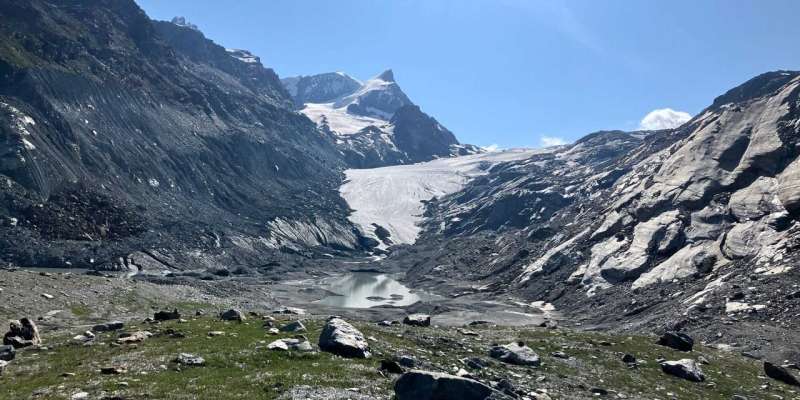This article has been reviewed according to Science X's editorial process and policies. Editors have highlighted the following attributes while ensuring the content's credibility:
fact-checked
peer-reviewed publication
trusted source
proofread
Uncovering the link between meltwater and groundwater in mountain regions

An international group of experts in mountain hydrology argue that the traditional understanding of the mountain water cycle has largely ignored the role that cryosphere-groundwater interactions play. This oversight could lead to incomplete or inaccurate predictions of water availability in mountain regions, especially in the context of climate change, suggest the authors in a Perspective Paper appearing in Nature Water.
Mountains are often referred to as water towers of the world, supplying fresh water to ecosystems and millions of people downstream. Specifically, snow and glacier melt are important elements in the water balance of mountain regions, supplying water during warmer and drier months of the year.
However, the connection between meltwater and groundwater is not well understood says Marit van Tiel, Postdoctoral researcher at the ETH Department of Civil, Environmental and Geomatic Engineering and lead author of the article. In particular, little is known about how glacier melt partitions between reaching rivers directly or infiltrating below the surface to recharge deeper groundwater. This information is critical to understand how both surface water and groundwater will change in the face of climate change, and plan for sustainable water management.
Challenges for sustainable water management
By synthesizing the existing research on the topic, the authors found that while meltwater contributions to groundwater can be substantial, estimates vary widely. Developing knowledge about meltwater-groundwater connectivity is complicated by the difficulties in directly measuring groundwater in remote mountain settings, requiring researchers to develop alternative approaches, which are often heavily site-specific and limit comparisons between studies.
An important open question to link the cryosphere with groundwater and the rest of the mountain water cycle is the scales at which this connectivity plays a role, both in terms of space and time. Insights into the spatiotemporal patterns of how meltwater travels to groundwater and surface water determine where, when and at what rate meltwater-sourced groundwater re-emerges through springs, discharges to surface water bodies or can be pumped from groundwater wells at lower elevations. This is a key consideration for sustainable water management both for mountain communities and downstream environments.
Call for more integrated research
The group of authors, consisting of experts in mountain hydrology, glaciology, hydrogeology, snow hydrology, water chemistry, and socio-hydrology, emphasizes that without considering the connectivity between cryosphere and groundwater, we miss out on a comprehensive understanding of how water moves and is stored in high mountain regions.
With global warming significantly impacting these sensitive areas through accelerating glacier retreat, diminishing snowpacks, and shifting precipitation patterns, there is a pressing need to understand this connectivity to better anticipate the sensitivity of mountain water supply to future climate warming. The authors call for more integrated research approaches that combine cryospheric science, hydrogeology, mountain hydrology and climate modeling to quantify and better understand these processes.
More information: Marit van Tiel et al, Cryosphere–groundwater connectivity is a missing link in the mountain water cycle, Nature Water (2024). DOI: 10.1038/s44221-024-00277-8
Journal information: Nature Water
Provided by ETH Zurich





















